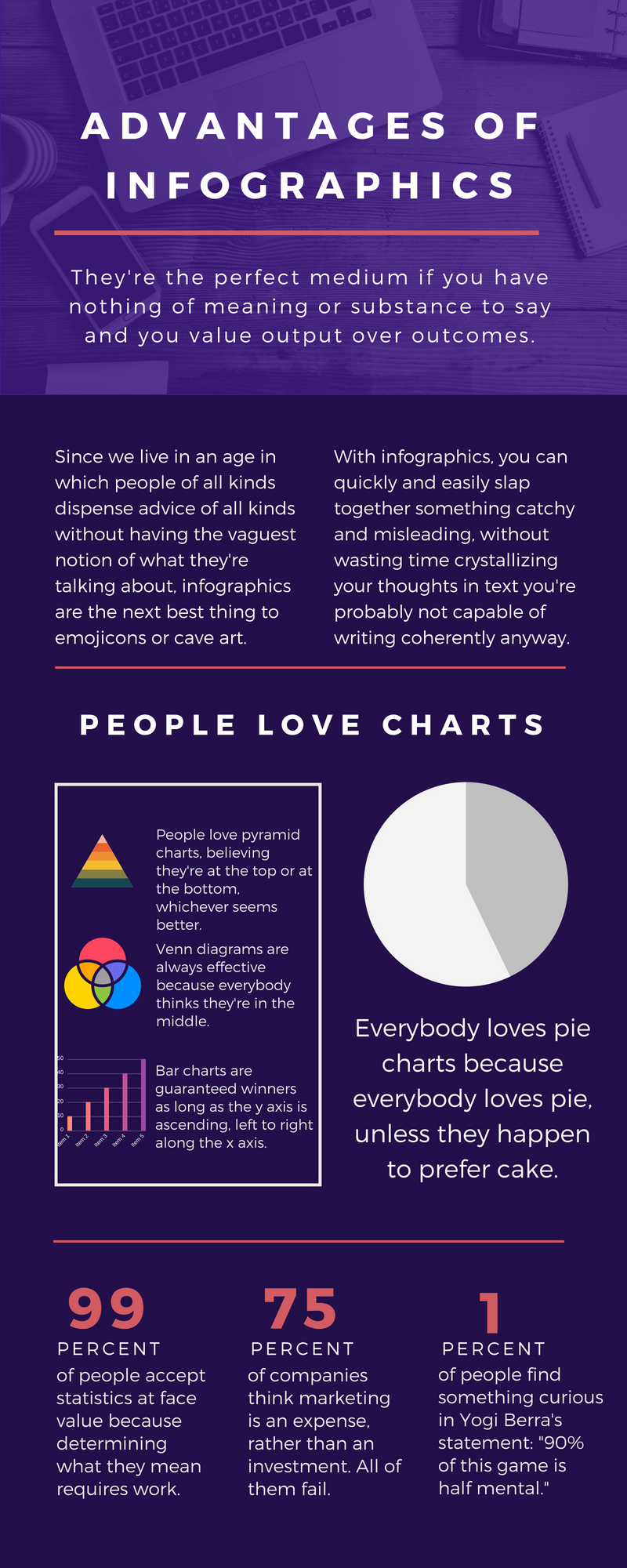If I had more time, I would have written a shorter letter. (variously attributed)
You could have seen this coming a mile away. It would have required neither crystal ball nor Ouija Board, neither soothsayer nor shaman. All you would have had to do is hang around business and marketing long enough to feel its inevitability in your very bones. And so it has come to pass:
The infographic is the new white paper.
That’s right. From its modest origins in the early 20th century as an instrument of British government — to its shameless abuse in the 21st century as a catch-all for any and all undisciplined brain dumps — the white paper has evolved into a confused and confusing combination of treatise, sell sheet, brochure, screed, manifesto, magnum opus of sales-ready content (good grief), gated website download, self-administered pat on the back, and surrogate for the relationships by which sales are actually made.
And if white papers were the workaround for the intellectual rigor required to write with conciseness and coherence, the infographic is the workaround for the white paper.

Blown Away
From its own modest beginnings in Christoph Scheiner’s Rosa Ursina sive Sol, the infographic has been co-opted, mangled, debased, trivialized, rode hard, put away wet, and misbegotten in direct correlation with the diminution of our attention spans, our abdication of reading, and our waning desire to consume anything of substance or meaning. If a picture is worth a thousand words, an infographic is worth a million — plus all the neurons in our brains that are never caused to fire by the emptiness of the contemporary infographic. It’s the perfect communication medium for the so-called Modern Age.
In his 1946 essay, “Politics and the English Language”, George Orwell wrote: “Political language is designed to make lies sound truthful and murder respectable, and to give an appearance of solidity to pure wind.” We might paraphrase Orwell’s statement thusly to describe the infographic:
Infographics are designed to make nothing appear to be something, and to give an appearance of meaning to pure nothingness.
We’re Not Lost … Yet
I still believe everything is cyclical. I do believe we’ll come back to our faith in the effectiveness of meaningful, substantive language as a medium for effective communication. I’m absolutely convinced we’ll get to a point at which we’ll realize, albeit painfully, what we’ve lost, foregone, or surrendered. And I’m of the unshakeable conviction that our unquenchable desire for meaning and substance will supersede our laziness and our willingness to settle.
Until then, let’s enjoy Billy Preston’s ode to the infographic, shall we?
—
Header image by Timisu, courtesy of pixabay.com.

